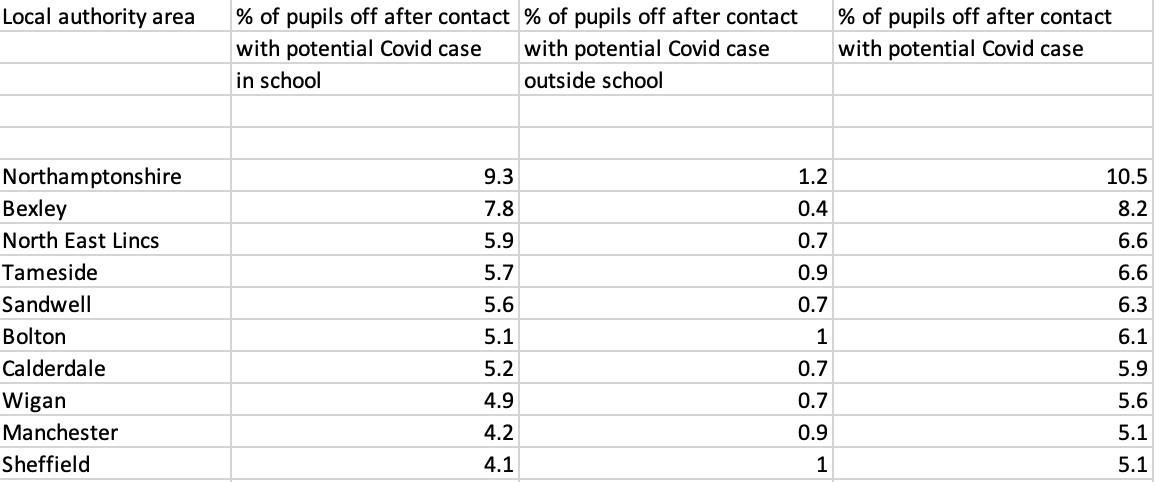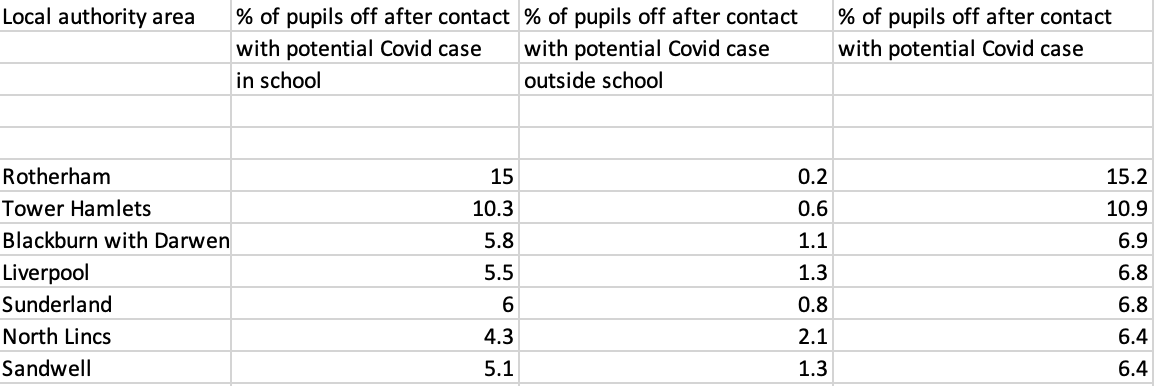The areas of the country that have seen the most pupils having to stay off school and self-isolate at home because of contact with potential cases of Covid-19 have been revealed in new government figures.
In one local authority area, 15 per cent of primary school pupils were self-isolating last week after coming into contact with a potential case of the virus in school.
And there are at least 10 areas of the country where more than 5 per cent of secondary school students were away from the classroom self-isolating last week, according to Department for Education data.
Self-isolating: Plan to use rapid tests to keep close contacts of Covid cases in school is halted
Covid: Colleges show drop in positive test results
Vaccine: Pupils could receive jabs, government adviser says
The most recent data for 31 March shows that Rotherham had the highest proportion of primary school pupils self-isolating at 15.2 per cent.
Northamptonshire had the highest proportion of secondary students self-isolating, with 9.3 per cent off following contact with a potential case of Covid-19 at school. A further 1.2 per cent of students were off in the area after contact with a potential case elsewhere.
The next highest area for secondary students off self-isolating because of Covid contact was Bexley, where 8.2 per cent of students were staying at home.
In total there were 10 areas where more than 5 per cent of secondary students were self-isolating and another nine areas where more than 5 per cent of special school pupils were off due to Covid.
Nationally, 2 per cent of pupils were off as a result of contact with a potential Covid case.
Below is a breakdown of areas with more than 5 per cent of pupils self-isolating because of Covid contact last week. The majority of these self-isolations were because of cases in schools rather than outside.
Covid: Secondary school students self-isolating

Primary school pupils self isolating

Special school pupils self-isolating

The Department for Education had planned to use lateral flow Covid tests to do daily testing on anyone who had come into contact with a Covid case and allow them to stay in school if they tested negative rather than having to self-isolate.
However, this plan was dropped earlier this year and now pupils who come into contact with Covid are still being asked to self-isolate.
The DfE has published new figures today for schools that show attendance for Wednesday 31 March at schools that had not yet closed for Easter.
These figures shows that attendance was 93 per cent in state-funded primary schools, 87 per cent in secondary and 82 per cent in special schools.
The government estimates that 2.4 per cent of all pupils on roll in state-funded schools did not attend school for Covid-related reasons.
This includes
- 5,000 pupils with a confirmed case of the coronavirus (0.1 per cent of pupils on roll in open schools).
- 17,000 pupils with a suspected case of the coronavirus (0.3 per cent of pupils on roll in open schools).
- 82,000 pupils self-isolating due to potential contact with a case of the coronavirus from inside the educational setting (1.5 per cent of pupils on roll in open schools).
- 30,000 pupils self-isolating due to potential contact with a case of the coronavirus from outside the educational setting (0.5 per cent of pupils on roll in open schools).
This 2.4 per cent figure was down from 3.3 per cent of pupils absent for Covid-related reasons a week earlier.







